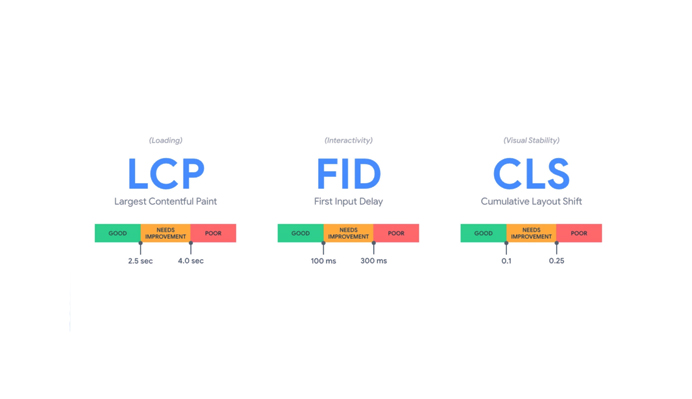15 Most Important SEO Metrics to Track Your SEO Success
July 26, 2021 in blog | No Comments

It is found that for about 61% of the global B2B marketers, SEO creates more leads while compared to all other marketing initiatives. (Source: Hubspot)
SEO is an ongoing process or an experiment, it takes so much effort to see the results. SEO doesn’t produce instant results, it requires pace and patience along with consistent SEO efforts and to produce expected results.
What is SEO?
A kind of digital marketing strategy where the primary goal is to improve rankings in the Search Engine result pages is called SEO or Search Engine Optimization.
With SEO campaigns, more people find the website, through both computer and mobile searches, engage and the business gets more conversions.
Now, how about measuring these SEO rankings? How do we know about the status of the page or site rankings? Let’s have a look into it too.
How to Measure the SEO Improvement
To know how your SEO is working, you certainly need some tools or methodologies that derive insights and statistics about the performance.
With competitive SEO metrics, you get exact insights regarding traffic, search rankings, leads, revenue generation, and a lot more.
It explains clearly how the strategies for your organic search are working. It gives you clear data and statistical evidence about the current status of your work and how it needs to be improved to rank better.
The following are the four main pillars of SEO KPIs:
- Technical SEO, that says the extent and how apt your content is so that it can be easily indexed or crawled.
- A relevant and unique content, with the right answers to all the search queries by the prospects.
- On-site SEO, which refers to content optimization and HTML optimization.
- Off-site SEO, that builds power from outside the site to enable more authority.
KPI Vs SEO Metrics
KPIs and SEO performance metrics are not the same. Then how do they differ? Well, let’s discuss them in detail.
SEO metrics refer to the value which is useful to the SEO marketing team to keep track and correlate the various SEO processes.
However, an SEO KPI or the key performance indicator refers to the value which tells us the effectiveness of SEO and lets us know if the goal completions were successfully attained.
Now, what about the term KPI in Digital Marketing? Both KPIs and the metrics can help the SEO teams to measure the performance while having particular KPIs in the digital marketing and getting them on a dashboard, will help to align the ultimate goals and keep track of those values.
15 SEO Metrics to monitor your SEO
If you can’t win the SEO key metrics, then you are about to face more threats than opportunities.
Here are some of the major and common SEO metrics which are helpful in your SEO content marketing campaign.
1. The Referring Domains can improve your DA
To get ranked on Google, having backlinks is also very important. When you have high-quality links, there is an improvement in your Domain Authority or DA.
According to Google, when a website initiates having a link to your domain, then this means that they consider your site as a reliable source.
Get track of the referring domains and the entire backlinks. If you wish to have a good improvement in the organic traffic, then craft ways to get new referring domains.
Keep an eye on this SEO metric and strengthen the link-building techniques to get your SEO skyrocketing.
2. Improve your Domain authority
Domain Authority otherwise called Domain Rating refers to the score which is used to evaluate the SEO strength of a particular site.
DA score is calculated by considering factors such as the referring domains, backlink analysis, and so on.
The DA scores are calculated from 0-100. Since it is based on a log scale, it needs good efforts to improve the ratings.
The sites having high ratings will have good rankings in search results.
To establish your presence at the top of the results page, then you should work to improve the Domain Authority.
The page authority is yet another metric that analyzes the power of particular pages instead of the whole domain.
3. On-page optimization
This is the process adopted to optimize the page contents. This optimization is aimed at both the search engines and the users.
Various tools are available for website audit where it gives a score that tells the extent of SEO optimization offered by the page.
This is determined by various factors like:
- The metrics to measure SEO Keywords
- Keyword density extent and key terms
- Keywords present in the headings, subheadings, and first 100 words
- Internal links and external links
- The meta description and meta titles
- URL and Canonical URL
- Alt text and image description
4. Monitor the text readability and relevance
The majority of the SEO metrics are focused on monitoring and tracking the information such as the traffic, keywords, ranking, views, leads, etc. But how to monitor the content quality on your business website?
A readability score is really important to ensure that your content gives the best experience to the reader or the audience. The content should also be relevant to them, and easy to understand.
Google and top search engines search for unique and relevant content to consider for rankings. At the same time, the content should be clear and should describe the actions and takeaways.
5. Look into the Impressions
Whenever your page is displayed in the results, then this is taken as an impression.
An impression doesn’t mean that the user has to scroll and view your listing. Your impressions improve as there is enough improvement in the page rankings.
With the Performance module, it is easy to monitor the impressions in Google Search Console.
The impression is not a click. Impressions define the number of times your page has resulted in the SERP.
6. Embrace the CTR
CTR or the Click Through Rate lets you know about the value of impressions in the search results, made by the click-through for your webpage.
For instance, when 100 people come across your page in the results page, and 2 people click on them, you have a 2% CTR.
You can monitor the CTR in the Performance module present in Search Console.
The ranking and the CTR are highly correlated. When you rank more, then you get more clicks too.
To boost your CTR, below given are some tips you can follow.
- Get the search intent aligned to the title
- Have CTA in the title, like urging for email signups, subscription, buy now, etc.
- Let the title be catchy with dashes or brackets
- Make meta titles and meta descriptions to urge readers to consume more
- Make the title and description more emotional
- Tell a story and explain to the users about benefits they get from the content
- Make the data structures and the search terms streamlined
- Use crisp and short URLs. Remember to include the primary keyword in it.
7. Keyword research and Keyword rankings
The keyword rankings are essential SEO conversion metrics that require attention.
With the keyword performance analysis and keyword tool, you can easily check out whether an SEO process is working or not.
You can also get fresh insights regarding the existing organic market share and the available opportunities.
While performing the keyword research using both the branded terms and non-branded searches.
With a branded list of keywords, you can focus on the customers who are ready to get your product. They maintain and build your trust factor.
While the non-branded keywords are important to drive the customers to decide their buyer journey.
If the keyword rankings decrease, it means you are in trouble. SERP trackers can help you stay aware of these changes and adopt adequate measures against this decrease.
8. Organic market share
This is also known as search visibility, which tells us the score or value of the extent of organic traffic your website earns when compared to the number of clicks available.
It considers both the ranking level and the search volume measures that bring in the CTR.
With several tools, you get a good score for both keywords and SEO visibility. With both these scores, you can have a picture of the SEO performance of your website.
9. Track your organic traffic
Your site should get good organic traffic and this also needs to be well measured. This SEO metric is helpful to determine how your SEO strategies benefit in creating a smooth process and results in conversion.
You don’t get any traffic, conversion, or revenue without adequate organic performance. The remedies need to be adopted in case you don’t have enough organic traffic.
With Google Analytics, you can watch and analyze the organic traffic on your devices. Make sure you assess and evaluate the quality of the SEO and traffic as well.
10. Pamper your Organic conversions
The organic conversion rate, undoubtedly, has a strong correlation with the ideal organic traffic needed for your website.
With high traffic, if you still encounter the least conversions, this means the people reaching your site are not relevant. It simply means that you are inviting traffic who are not your target audience.
To avoid this unpleasant situation, you can focus on tools to generate keywords that drive the desired traffic and create relevant conversions for your business.
Let’s understand more about it with an example. If you are selling candies and flavored toffee, and you have detailed blog content about the film heroes and their favorite chocolates.
Now let’s consider the search analytics, here you get a lot of traffic for the particular post. However, conversions may not be as expected.
This is probably because people visit your site to read and enjoy the hot news of a celebrity rather than looking for your candies and toffee.
For effective conversion, find the relevant keywords and ensure that the marketing funnel is satisfied with content built around those specific keywords.
11. Have your pages indexed
Indexing a page is the key SEO metric and an important step for Google to display them in the search results.
You never get good organic search traffic unless your page is indexed. With the Google search console, make sure that the pages on your website are indexed.
Your site topical authority will be hurt in case the indexed pages have any violated, outdated, or unwanted and duplicate content. Also, make sure that the content is not less than 300 words.
Modify the outdated content, perform a content audit, and update them frequently. Irrelevant content should be deleted from the site and also remove the low quality links and spammy links.
12. All new Core Web Vitals and the page speed
User experience is the major concern of Google. A fast-loaded page is an attraction, while people don’t have the patience to wait for long to get a page loaded. They simply move to the next option and you end up losing a customer.
If the PageSpeed insights give you good speed, you get more engagement and good conversion rates.
Now, the advanced Core Web Vitals were introduced by Google as user engagement metrics in 2020. This is to be considered as a key search engine ranking factor in May 2021.
They are more advanced ways of evaluating and measuring the overall average time frame to load a page. The core web vitals emphasize three major features, namely Visual Stability, the load time, and the extent of interactivity offered.
This is represented as Cumulative Layout Shift or CLS, First Input Delay or FID, and Largest contentful paint or LCP.
Google Search console has an option called Enhancement area, which can help you to understand how your website performs concerning the Core Web Vitals.
13. Analyze the Number of Pages per Visit
With a measure of the number of pages per visit, you can get an analysis of the transformation and the status of the audience in the conversion funnel.
If the people tend to leave as soon as they visit the site, then you are losing a valuable customer and failing to convert them for your benefit.
Every customer might not be ready to purchase the product. In this case, you will require to convince and let them feel that the product or service is worth purchasing.
Highlighting the key benefits and creating points to seek attention is essential in building relevant traffic and thereby the conversions.
To improve the pages per visit, here are some steps :
- Keep the layout simple with easy navigation.
- Have engaging clusters for the topics to keep readers move to other pages on your site
- Use internal linking to improve the engagement.
- Have videos, and entertaining content to induce interest in the users.
14. Avoid the Crawl errors
Crawl errors need to be resisted while SEO is considered.
Whenever the search engine makes efforts to reach a particular page of the website and is not able to make it, it results in crawl errors.
This can be due to many reasons like pages that got deleted, no-index pages, or usage of the robots.txt to block the pages.
You cannot have a page indexed if the page is not getting crawled by the search engine. If this continues, then your existing ranking positions can also get affected and you lose organic traffic.
Using an SEO tool like Google Search Console can help you to detect and fix crawl errors.
15. Reduce the Bounce rate
The term bounce rate refers to the percentage of people visitors who enter your site and don’t stay for long, rather tend to leave soon.
An above-average bounce rate can warn you about the issues with your website or particular web pages.
The following steps can help you reduce the bounce rate:
- Check the search intent and how your content caters to this need.
- Be clear on the page about your information and the purpose in detail
- Make interesting and informative content
- Make the tone casual, easy to understand in a good design
- Try to avoid boring stuff like too many ads or quick popup displays
- Reduce the waiting time for page loading
- Add proper CTA
- Use various tools to improve and monitor the SEO of your page
The benefits of SEO metrics are beyond explanations. The instant SEO metrics let you know the exact ranking factors and guide you on which areas to be closely monitored.
With the above crucial metrics, you get crystal clear insights on the performance of your work in terms of organic search results, to make SEO success.
Hence, you can collect the data required to analyze and frame new strategies for modifying the existing SEO goals and plans effectively.
